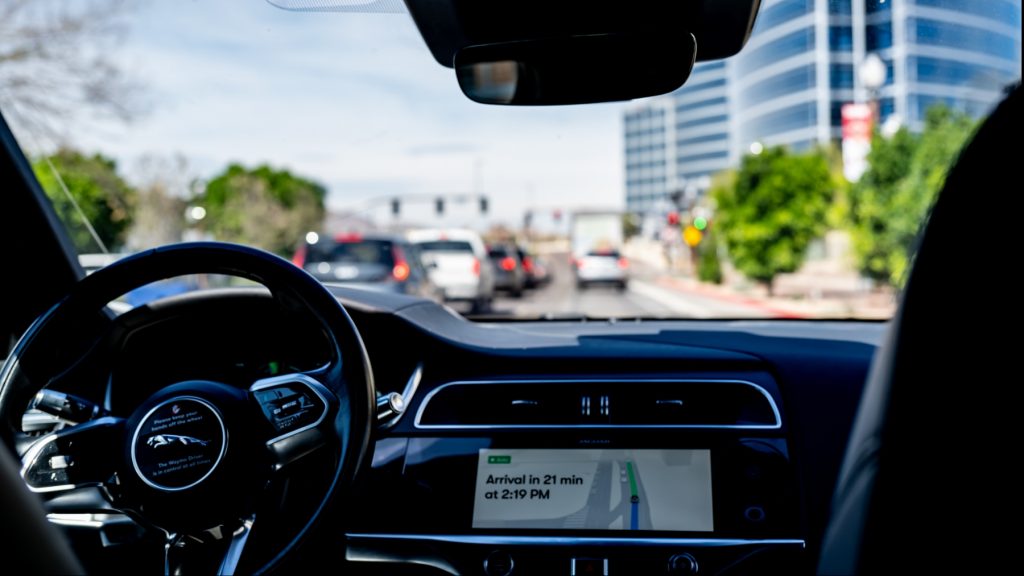
Self-driving car companies in San Francisco are becoming more popular lately, with Waymo expanding its fully driverless ride-hailing services, Waymo One, to the general public in the city, according to Waymo.
The Waymo self-driving car offers fully driverless rides, despite the passenger’s hesitance, the technology is slowly gaining acceptance.
There is a change in how the public perceives self-driving cars in San Fransisco, according to Waymo. The driverless cars now blend seamlessly into city traffic, with passengers and pedestrians barely blinking an eye as they pass.
Self-Driving Car Companies in San Francisco Building Trust
Waymo’s autonomous cars foster trust and comfort by greeting passengers by name, playing music, and offering features like climate control and real-time drive tracking.
A screen near the steering wheel contributes to transparency by displaying the surrounding environment, including pedestrians, cyclists, and vehicles, helping passengers feel more connected to the car’s decision-making process.
“There is something very important about being able to know where the car is going, that the car sees what you’re seeing,” said Megan Neese, Waymo’s head of product and customer research.
Since 2020, Waymo has been operating autonomous taxi services, currently offering around 150,000 paid rides weekly across San Francisco, Los Angeles, and Phoenix, according to Forbes Australia.
Despite this success, some individuals remain unconvinced, with safety concerns topping the list as primary issues. Even though the company highlights strong safety records, and this includes an 85% decrease in injury-causing crashes over 7 million miles compared to traditional cars, public apprehension persists, according to TIME.
Amazon-backed Zoox autonomous car set to launch in 2025, is taking a different approach to building consumer trust with features of unconventional design, with passengers facing each other and no visible steering wheel or dashboard. The vehicle’s interior is sleek and futuristic, with facilities like personalized temperature controls and wireless charging.
Meanwhile, other competitors, such as Cruise (owned by General Motors) had to pause operations after a serious incident involving a pedestrian, raising questions about the reliability of autonomous systems.
Global Race for Autonomous Taxis
The race for autonomous riding services is intensifying. In China, world’s largest robotaxi operator, AutoX, operates in major cities, while Baidu’s Apollo Go offers fully driverless rides in select locations. Both companies prioritize transparency, such as live feeds of the vehicle’s surroundings, to build consumer confidence. However, public perception remains a challenge. Zoox’s remote control robot car and other companies’ use of human intervention during autonomous trips are efforts to demonstrate that self-driving cars are safe even in difficult situations.
Like every normal car, pros and cons of autonomous vehicles exist. However, some incidents like Zook autonomous car getting stuck behind a plastic bag or having minor accidents, spreads doubts on the technology’s reliability.
In the US, companies like Waymo and Cruise have made significant upgrading in autonomous vehicles, yet large-scale, driverless taxi deployment remains a distant goal. Waymo aims for one million trips per day, but the technology isn’t ready for such large scale. Industry experts agree that achieving large-scale deployment will take time.
The Future of Autonomous Ride-Hailing
Public trust will be the key to the success of the robotaxi market. Companies are experimenting with different designs, transparency measures, and human oversight to fix concerns and win over passengers. While the path to full-scale autonomous ride may still be long, the industry is pushing forward with plans for expansion in cities across the globe.
In the coming years, autonomous vehicles benefits will likely become more acknowledged and a standard part of urban transportation. However, for self-driving car companies in San Francisco convincing consumers to take that first step into a driverless car remains one of the biggest challenges in the road to widespread adoption.
Inside Telecom provides you with an extensive list of content covering all aspects of the tech industry. Keep an eye on our Tech sections to stay informed and up-to-date with our daily articles.